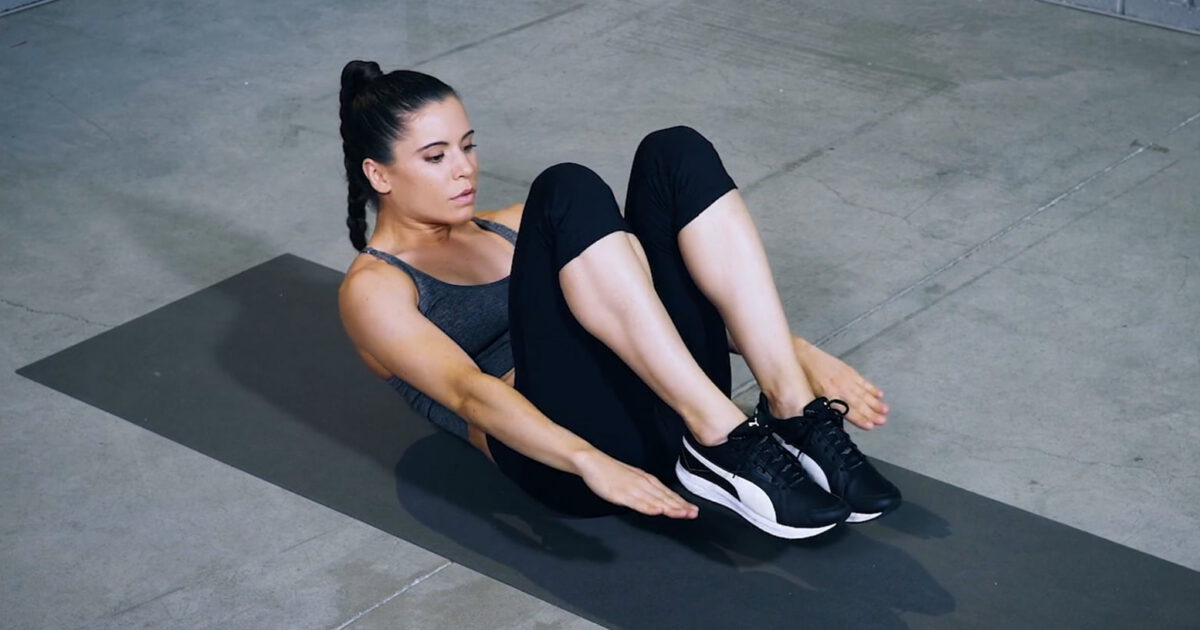If you are looking to add variety to your existing core training, the abdominal row is a great option. It will help you improve your core stability and enhance your lower back health while you work on that six-pack. Here is all you need to know about this exercise.
WHAT
- The abdominal row is a great core stability exercise that can add variety to your existing core training.
- You can look at it as the more accessible version of the classic V-Sit exercise, a popular move in the industry.
HOW
- Lie on your back with legs straight, feet together. Place arms straight overhead. Flatten your low back slightly into the floor.
- Begin the movement by bringing the knees towards the chest and simultaneously bringing the hands to touch the feet. Although the legs will bend, the arms remain straight. To make it easier, imagine drawing a semicircle shape with the arms as they come towards the feet.
- Maintain balance and control as the hands touch the feet.
- Return under control and repeat for reps or time.

WHY
- The v-sit is a popular core exercise; however, it is considered an advanced one and requires a high level of control and balance. One can look at the abdominal row can as the more comfortable and accessible version. Once you master this essential exercise, you can progress onto the V-Sit.
- The effectiveness of this exercise lies in the simultaneous coordination of the upper and lower body. The movement of the arms and legs together allows for activation of the entire abdominal wall.
- If the exercise is still too challenging, it may be regressed in the following ways: by keeping the legs bent on return (not straightening fully); or by bending the arms to reach the feet (rather than keeping them straight).
- This exercise may help to develop proper coordination of the abdominals during activities where you bring the chest towards the knees, e.g. tuck jumps, box jumps, toes to bar. In any case, it will certainly add variety to any core training routine.
- The abdominal row is also closely related to the bicycle crunch, which uses a counter-rotational movement bringing opposite arm and leg together.
Now that you showed some love to your core with the abdominal row, it’s time to find some other challenges.
- Plank
- Windscreen wiper
- Side scale
- Deep squat (hip in)
- Back support
- Crab walk
- Long jump
- Single-leg balance
- Side lunge
- Tornado
- Core bag deadlift to row
- Reverse plank
- Squat hold
- Jumping lunge with arms overhead
- Jumping jacks




